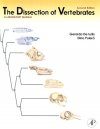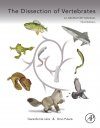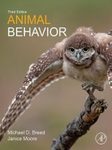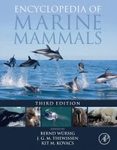About this book
Detailed and concise dissection directions, updated valuable information and extraordinary illustrations make The Dissection of Vertebrates, 3rd Edition the new ideal manual for students in comparative vertebrate anatomy, as well as a superb reference for vertebrate and functional morphology, vertebrate paleontology, and advanced level vertebrate courses, such as in mammalogy, ornithology, ichthyology, and herpetology.
This newly revised edition of the most comprehensive manual available continues to offer today's more visually oriented student with a manual combining pedagogically effective text with high-quality, accurate and attractive visual references. This new edition features updated and expanded phylogenetic coverage, revisions to the illustrations and text of the lamprey, shark, perch, mudpuppy, frog, cat, pigeon, and reptile skull chapters, and new sections on amphioxus or lancelet (Branchiostoma, Cephalochodata), a sea squirt (Ciona, Urochordata), shark musculature, a gravid shark, shark embryo, cat musculature, and the sheep heart.
Using the same systematic approach within a systemic framework as the first two editions, The Dissection of Vertebrates, 3rd Edition covers several animals commonly used in providing an anatomical transition sequence. Nine animals are covered: amphioxus, sea squirt, lamprey, shark, perch, mudpuppy, frog, cat, and pigeon, plus five reptile skulls, two mammal skulls, and the sheep heart.
Contents
1. Vertebrates and Their Kin
2. The Lamprey
3. The Shark
4. The Perch
5. The Mudpuppy
6. The Frog
7. The Cat
8. Reptile Skulls and Mandibles
9. The Pigeon
Customer Reviews
Biography
Gerardo De Iuliis, PhD, received his doctorate from the Department of Zoology, University of Toronto, in 1996, with specialization in Vertebrate Paleontology and Comparative Vertebrate Anatomy. He currently teaches two courses, Comparative Vertebrate Anatomy and Vertebrate Paleontology: Major Transitions in Vertebrate History, at the Department of Ecology and Evolutionary Biology, University of Toronto, and Human Anatomy and Physiology at George Brown College (Toronto), and is a Research Associate at the Royal Ontario Museum (Toronto). His primary research interests include the systematics and paleobiology of xenarthrans, particularly of fossil sloths. He has published numerous articles on fossil sloths, as well as on fossil cingulates and lungfish, among other vertebrate groups.
Dino Pulerà, MScBMC, CMI, was the first recipient of the John J. Lanzendorf PaleoArt Award from the Society of Vertebrate Paleontology for best paleontological technical illustration in 2010. He received his Bachelor of Science in Zoology and his Masters of Science in Biomedical Communications at the University of Toronto. After completing his graduate studies, he spent the first part of his career creating visuals for textbook publications. The second half of his career has been spent working for a medical-legal studio as an associate art director and medical illustrator. Dino also operates his own freelance business, specializing in animal anatomy and vertebrate palaeontology. His work has won numerous awards and has been displayed in many international exhibitions. He is recognized as a Certified Medical Illustrator (CMI) by The Board of Certification of Medical Illustrators.





















![Kame no Kōra wa Abarabone: Jintai de Arawasu Ugokumonozukan [Turtle Shells Have Ribs: A Picture Book of Animal Anatomy Represented by the Human Body]](http://mediacdn.nhbs.com/jackets/jackets_resizer_medium/24/249897.jpg?height=150&width=99)












